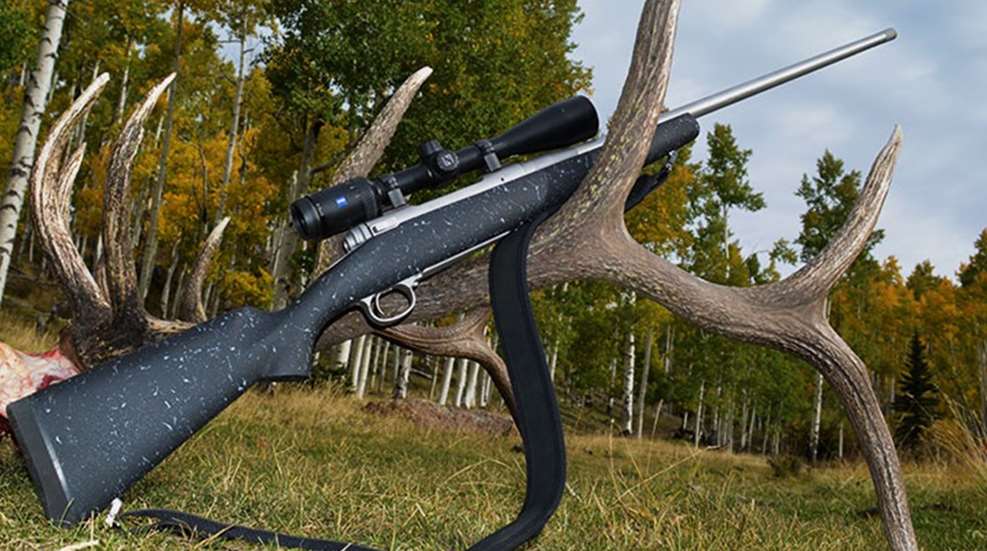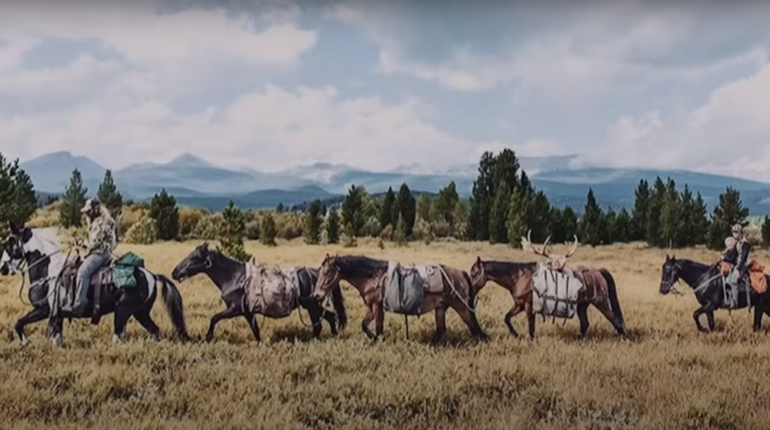
1. Small Game
Animal types in this category include rabbit, squirrel, raccoon, opossum, mink, fox, lynx, badger and raccoon. Weight typically ranges from 2 to 15 pounds, and typical range is normally less than 100 yards.
To avoid excessive meat and pelt damage, small-caliber, low-power cartridges are a popular choice for small-game hunting. For pelt hunting, non-expanding solid lead or full-metal-jacket (FMJ) bullets are used to keep damage to a minimum. For edible game, expanding lead or jacketed bullets facilitate a clean, quick kill with a minimum of lost and wounded game.
Rimfire cartridges such as the .17 Mach 2, .17 HMR, .22LR and .22WMR are popular choices due to their low cost. These calibers are best limited to short-range applications at a maximum of 100 yards. For centerfires, small-capacity .22s (i.e., .22 Hornet, .218 Bee, .222 Rem. and .223 Rem.) and .25 caliber (i.e., .25-20 Win.) cartridges with soft-point or hollowpoint bullets are in order. These calibers provide added range and striking energy at moderate cost.
2. Varmints, Pests
Animal types include coyote, jackrabbit, badger, groundhog, marmot, prairie dog, ground squirrel, rat, gopher, crow and pigeon. Weight varies from less than 1 pound to 30 pounds. Typical range extends from 100 to 400 yards.
This category of hunting animal includes both varmints and pests. Only rarely considered edible, meat damage is likely not a terminal-ballistic consideration. However, despite being small and thin-skinned, varmints can be challenging to hit and difficult to kill, as ranges can easily be in excess of 300 yards. This places a premium on high striking velocity, rapid bullet expansion with minimum penetration and match-level accuracy.
Rimfire cartridges with hollowpoint bullets can be used on varmints and pests to an effective range of about 50 yards. Beyond that, however, most .22-caliber rimfire cartridges lack the striking velocity and bullet expansion needed to cleanly anchor varmints and pests, and their low noise level is an asset in some locales. Popular modern caliber choices for hunting varmints and pests include: .17 HMR, .204 Ruger, .222 Rem., .223 Rem., .22-250 Rem., .220 Swift, .243 Win. and 6mm Rem. The lighter-weight bullets with thin jackets and hollowpoint or soft-point design are best.
3. Medium Game
Animal types include deer, wild sheep, antelope, javelina, feral hogs, caribou, warthog, impala and other smaller African antelope. Weight ranges from 50 to 350 pounds; typical ranges extend from less than 50 to more than 300 yards.
Medium, thin-skinned game animals are popular quarry for modern hunters; by far, the most common of these are deer. Regulations usually require that deer or medium game be hunted with a centerfire rifle cartridge of 6mm or greater loaded with expanding soft-point or hollowpoint bullets producing a minimum striking energy of a specified level at 100 yards. For this reason, non-magnum calibers of moderate power ranging in caliber from .243 Win. to .35 Rem. have been popular choices, while magnum calibers up to .30 are increasingly finding favor.
A hunting bullet best suited for medium game must be capable of reliably producing: penetration sufficient to reach vital organs deep inside the animal; expansion to produce a large, permanent wound track; retention of at least 80 percent of original weight; and enough striking energy to cleanly kill medium game at 100 yards (approximately 1,500 foot-pounds or more). In practice, this means a spitzer, flat-base bullet with a weight of 100 grains or more.
Authorities disagree on the amount of penetration needed on a game animal. One school of thought prefers that all the bullet's energy be expended inside the animal. They prefer the bullet to stop just shy of exiting. The second school of thought prefers that the bullet exit, leaving a sizeable wound and blood trail. Both schools agree that a hunting bullet for medium game must have enough penetration to reliably reach vital organs. Target ammunition should not be used for medium-game hunting, as match bullets are not designed to give reliable penetration or expansion.
4. Large, Heavy Game
Animal types in this category include elk, moose, black bear, bison, musk ox, eland, zebra, kudu and crocodile. Weight ranges from 500 pounds and up; typical ranges extend from 50 to 300 yards.
Most large, heavy game is hunted at (relatively) close range. While these animals are relatively thin-skinned, they can be very hard to kill...sometimes requiring more than one shot. They will frequently run long distances after a poor hit. For these reasons, heavy-game hunting places a premium on deep bullet penetration, high striking energy and reliable bullet expansion. Ballistically, this is translated into large-caliber bullets (at least .308 inches in diameter) weighing 180 grains or more, fired from standard or magnum calibers. Bullets fro such game must be of robust construction to maintain weight and be designed to expand slowly so as to deposit maximum energy deep inside the target. These requirements call for a bullet of premium construction fired from a potent cartridge.
5. Dangerous Game
Animal types include lion, leopard, Cape buffalo, hippopotamus, elephant, large bears and wild boar. Weight ranges from 150 pounds on up, often exceeding 750 pounds. The typical range is 75 yards or less.
Dangerous game like Africa's "Big Five," grizzly bears and polar bears present a singular challenge in terms of ammunition. When encountered or after being hit, such animals may attack, in which case they must be stopped as quickly as possible. For this reason, powerful cartridges firing large-diameter, heavy bullets are the rule for hunting dangerous game. Reliable penetration and bullet weight retention to reach vital organs deep inside the animal are imperative. For large dangerous game such as elephant, hippo and Cape buffalo, heavily constructed non-expanding bullets called "solids" weighing 300 to 500 grains are a popular choice. The projectile needs to be able to smash through heavy bone, then traverse several feet of tissue to penetrate vital organs. On thinner-skinned dangerous game such as leopards and bears, soft-point expanding bullets with thick jackets weighing 180 to 300 grains are a common choice.






































